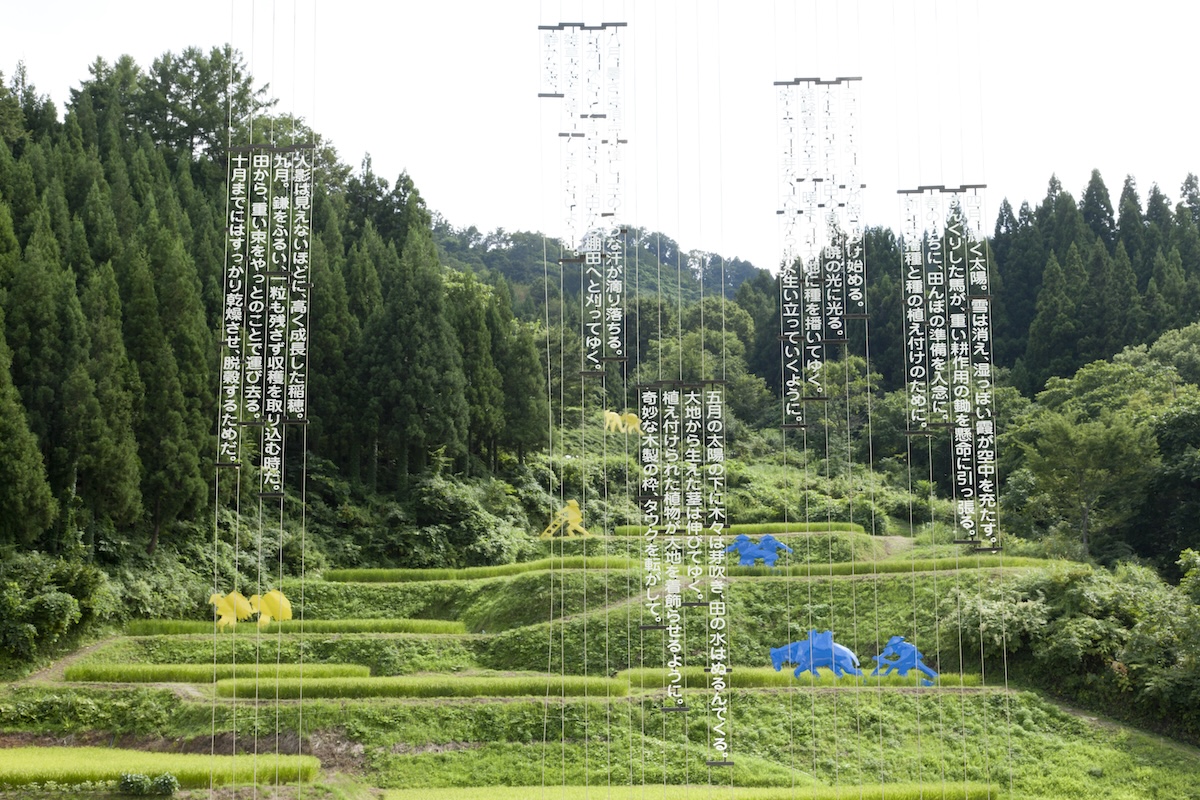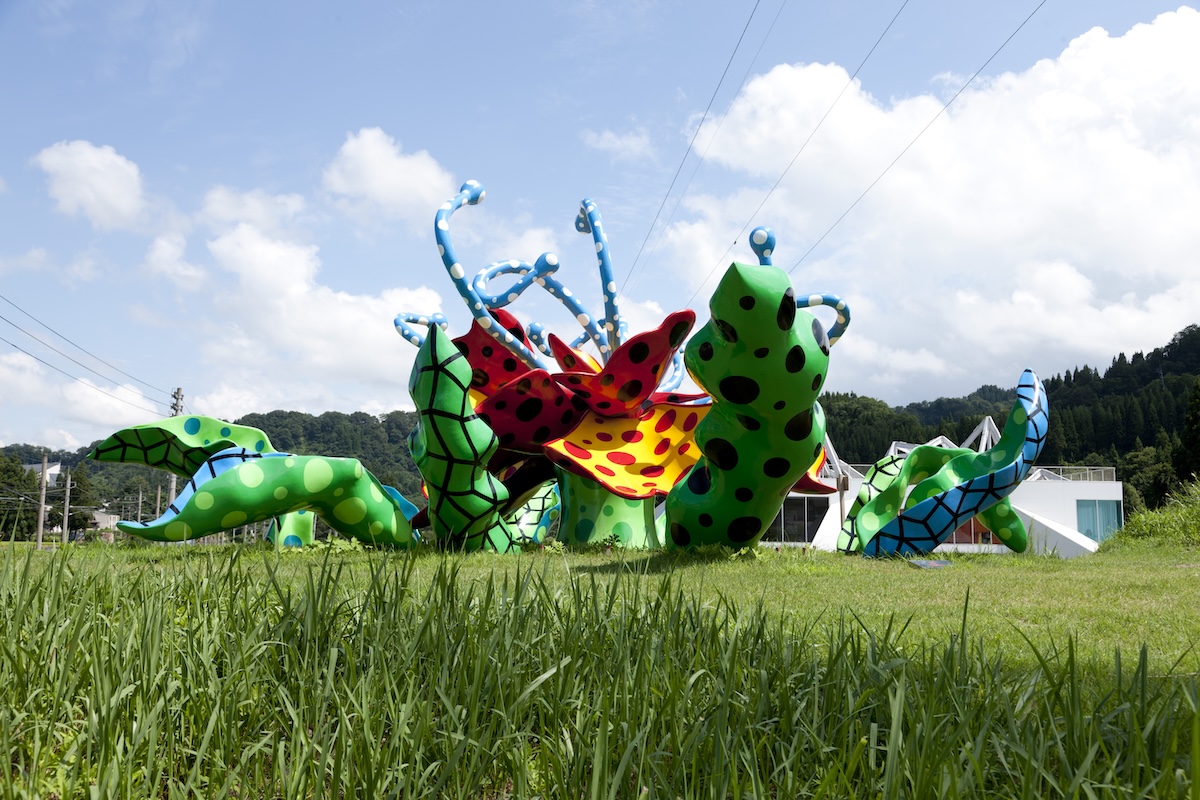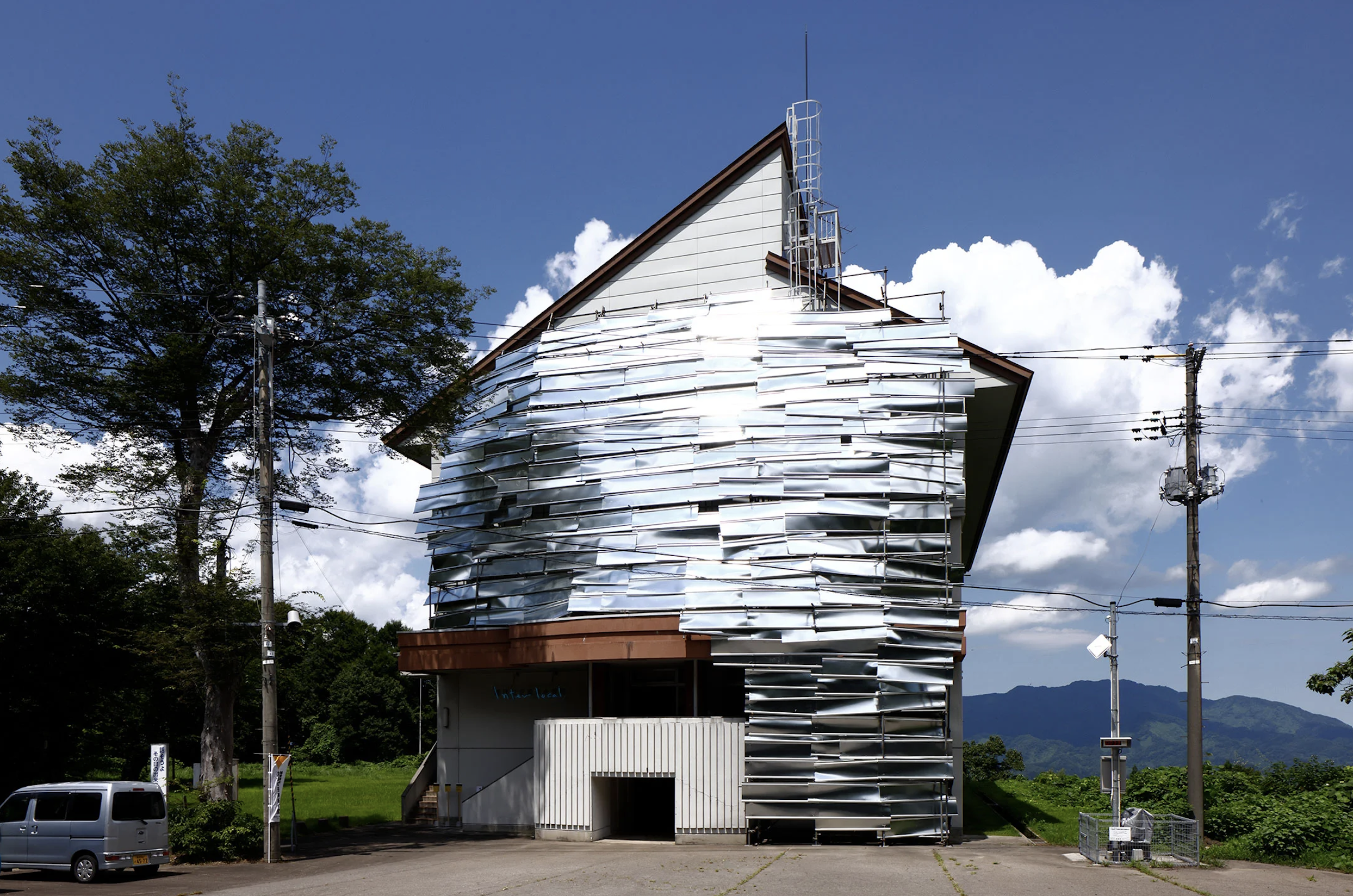ECHIGO-TSUMARI ART TRIENNALE 2025
HAPPENINGText: Alma Reyes
On the terraced rice paddies clearly visible from the restaurant windows, five alluring yellow and blue sculptures, “Terraced Paddy Fields” by Ilya and Emilia Kabakov represent the traditional agricultural life of the village. The works are made of semi-transparent fiberglass, making them adequately noticeable against the green or snowy mountains.

Ilya and Emilia Kabakov, Terraced Paddy Fields, Photo: Osamu Nakamura
Also on display is Yayoi Kusama’s massive and chromatic open-air flower sculpture “Tsumari in Bloom”, dedicated to the sunshine and green forests of Echigo-Yuzawa. While admiring the splashes of art installations, visitors can also observe villagers working in the rice fields or children playing in the snow. The project has given the agricultural land a vital impetus for resonating with its traditional wealth.

Yayoi Kusama, Tsumari in Bloom, Photo: Osamu Nakamura
Supporting its principle of structural preservation, ETAT has converted the neglected Shimizu Elementary School in Tokamachi City into the Tsumari Archive Center. Installation artist Tadashi Kawamata conceptualized a multi-purpose facility that consists of a huge art library of approximately 30,000 books and an archive of documents and materials related to the festival and other community-based art projects. Inside the former gymnasium is Kawamata’s studio gallery. The building makes use of horizontal fencing construction along the external wall, as seen in snowsheds during winter. This installation acts as a buffer against the yearly snowy weather, and at the same time, stands as a permanent piece of art.

Tadashi Kawamata, Tsumari Archive Center, Photo: Keizo Kioku
Finally, the grand Museum on Echigo-Tsumari, MonET in Tokamachi City, culminates permanent and seasonal artworks during the festival. The remarkable building with a semi-outdoor concrete hallway and bordered by glass windows is designed by architect Hiroshi Hara, who also completed the Sapporo Dome and Kyoto Station building. Hara conceived of a squarish structure for the atrium, which encircles the central pond to stabilize a sense of order against the, otherwise, muddled-up layout of the townscape. Selected works by Leandro Erlich, Kohei Nawa, Carlos Garaicoa, Ryota Kuwakubo, Daido Moriyama, and more reflect the climatic, physical, and cultural characteristics of Echigo-Tsumari. The summer program reveals the direction of BankART1929 in the special exhibit, “”The answer is blowin’ in the wind.” The show stages pieces brushed by the wind around the pond. Akinori Matsumoto’s sound objects echo soothing sounds throughout the building, while Tatsuji Ushijima’s works spin and rotate with the wind. Aiko Yamamoto’s fabrics sway with the air current, and Ihara Koro’s animal sculptures move along the breeze.
The full-day adventure is an absolutely wholesome treat not just to engage in art, but to immerse wholly in the blessings of nature. Reservations are available on the website for the several tours lined up for the season that best suits your preference.
Echigo-Tsumari Art Triennale 2025
Date: July 19th – November 9th, 2025
Opening hours: 10:00 – 17:00 (10:00 – 16:00 in October and November)
Closed on Tuesdays and Wednesdays except holidays (open on August 12th and 13th)
Place: Echigo-Tsumari Region (Tokamachi City and Tsunan Town, Niigata Prefecture)
https://www.echigo-tsumari.jp
Text: Alma Reyes
Photos: Courtesy of NPO Echigo-Tsumari Satoyama Collaborative Organization





